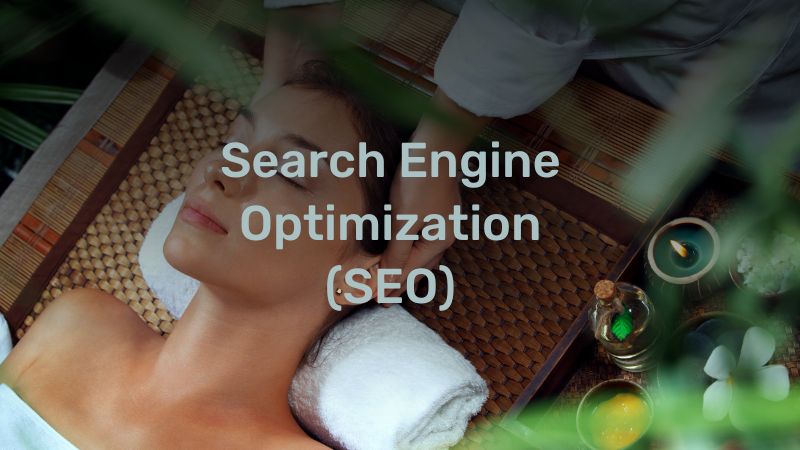
Spa SEO Optimization: The Complete Guide
Given the spa industry’s substantial digital transformation, it is more imperative than ever to establish an online presence. More and more people are using the internet to research and book spa services, therefore a spa’s exposure in search engines has a direct bearing on the firm’s booking rates and success.
This is the point at which SEO becomes crucial.
SEO, or Search Engine Optimization, is the process of optimizing a website to increase its visibility when users search for queries related to your business on search engines. A higher position in search engine results increases the likelihood that people will notice your company and visit your website.
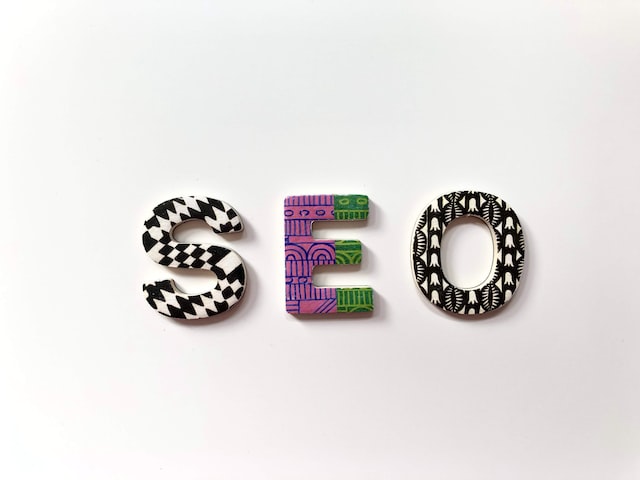
In this comprehensive guide, we will go over all the essentials of spa SEO optimization, including:
- Understanding the fundamentals of spa SEO
- Conducting effective keyword research
- Optimizing your website’s on-page elements
- Grasping and applying local SEO
- Creating engaging, SEO-friendly content
- Implementing advanced SEO tactics
By the conclusion of this guide, you will possess the required knowledge and resources to improve your spa’s online visibility and attract more clients through SEO.
Let us begin right away.
1. Keywords: The Heart of SEO
When individuals are seeking information, they input specific words and phrases into search engines. These are known as keywords.
It is crucial to target the appropriate keywords in order to ensure that your website is included in search results when potential clients are seeking information about the services you offer.
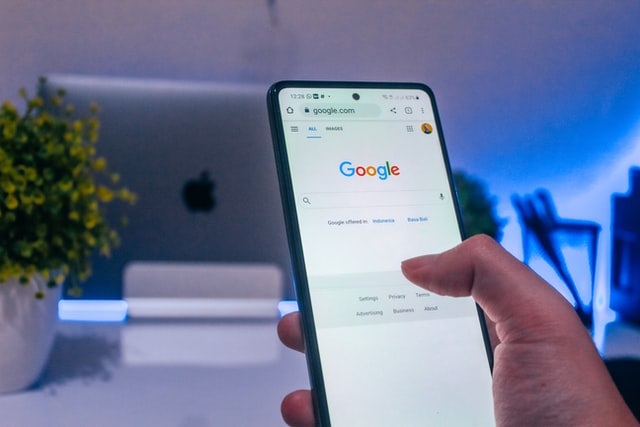
Why are keywords important in spa SEO?
Targeting the right keywords will offer the following benefits for your spa SEO efforts:
- Visibility: The appropriate keywords ensure that your facility is visible to potential clients when they are conducting a search for the precise services you provide.
- Targeted Traffic: Keywords attract visitors who are sincerely interested in your services, resulting in increased booking rates.
- Competitive Edge: By strategically using keywords, you can outrank your competitors in search results.
- Local Reach: Optimization of foot traffic is achieved through the utilization of local keywords, which attract clients from your immediate vicinity.
How to Research and Choose the Right Keywords
Although there are numerous methodologies available for keyword research, below are the basic best practices you can follow:
- Brainstorming: Initially, compile a comprehensive list of the services, treatments, and unique selling factors that your facility provides.
- Keyword Research Tools: Utilize free tools such as Google Keyword Planner or premium ones like Ahrefs or SEMrush to identify:
- Search Volume: How often people search for a specific keyword.
- Competition: The degree of difficulty associated with ranking for a specific keyword.
- Keyword Suggestions: Related keywords that you may not have previously considered. The basic principle is to look for relevant keywords with high search volume but low competition.
- Consider User Intent: Consider the precise nature of the inquiry that an individual conducting upon a particular keyword is conducting. Are they seeking information, an appointment, or something else?
- Local Focus: To attract local clients, it is crucial to prioritize keywords that include your city or region, as your spa is a local business that targets local traffic.
Long-tail keywords may have lower search volumes, but often have less competition and higher conversion rates.
Conducting comprehensive keyword research is essential for optimizing the search engine optimization of your spa’s website. To attract your target audience and enhance your search engine rankings, it is possible to identify the most pertinent keywords through the utilization of appropriate tools and strategies.
2. On-Page SEO for Spa Businesses
On-page SEO is the process of enhancing the ranking of individual web pages in search engines in order to attract more pertinent traffic through optimization. This involves the optimization of both the content and the HTML source code of a page.
Effective on-page SEO can significantly improve search visibility, thereby simplifying the process of locating your services for potential clients.

Optimizing Website Structure and Navigation
A website’s intuitive navigation and well-organized structure are essential for search engine optimization and user experience. Here are the key optimizations you should consider:
- Clear Hierarchy: Ensure that your website is organized with distinct categories and subcategories for various services, such as massages, facials, and body treatments.
- Easy Navigation: Use menu items that are both straightforward and descriptive. Visitors should be able to easily locate what they need with little effort.
- Breadcrumbs: Implement breadcrumb navigation to help users and search engines understand the site structure and improve internal linking.
Optimization of Meta Descriptions and Title Tags
Title tags and meta descriptions are important on-page components that won’t only affect search rankings, but also click-through rates.
Optimizing Title Tags
- Include Keywords: Incorporate target keywords into your title tags in a natural manner.
- Be Descriptive: Concisely articulate the page’s content.
- Keep it Concise: To ensure that it appears accurately in search results, aim for a length of 50-60 characters.
Example: “Luxury Spa Services in [City] | Massage, Facials & More”
Optimizing Meta Descriptions
- Encourage Action: Write compelling descriptions that motivate users to click.
- Include Keywords: Integrate primary and secondary keywords naturally.
- Keep it Concise: Keep it to 150–160 characters at most, and make sure the whole thing shows up in keywords.
Example: “Discover our luxury spa in [City] offering massages, facials, and wellness treatments. Book your appointment today for a relaxing experience.”
Content Optimization: Integrating Keywords Naturally
Content is king.
When it comes to search engine optimization, posting consistently high-quality content is the way to go.
A SEO-friendly content should be:
- Keyword Integrated: Incorporate keywords into your article in a natural way. Avoid keyword stuffing; cramming keywords into your content can instead harm your search rankings.
- High-Quality: Consistently publish content that is high-quality, interesting, and instructive; focus on what your audience needs.
- Haders and Subheaders: When using heading tags, such as H1 for main titles and H4 and H5 for subheadings, be sure to use keywords wherever possible.
- Service Descriptions: Develop comprehensive descriptions of each service your spa business offers. Remember to include the desired keywords wherever possible.
Image and Multimedia Optimizations
Media such as pictures, infographics, videos, and images may improve the user experience but need proper optimization for SEO.

- Alt Texts: You should include keywords into descriptive alt messages. Doing so enhances accessibility for visually impaired individuals and helps search engines interpret the image’s content. Example: <img src=”massage-therapy.jpg” alt=”Luxury Massage Therapy at [Spa Name] in [City]”>
- File Names: Rename image files to be descriptive and include keywords before uploading them to your website. Example: luxury-massage-therapy-city.jpg
SEO-Friendly Internal Linking Structure
Including internal links on your website makes it easier for visitors and search engines to go from one page to another.
Search engine optimization (SEO) benefits from an intuitive internal linking structure that guides search engine crawlers through site indexing. To make sure your internal linking structure is search engine friendly, follow these steps:
- Use Descriptive Anchor Text: The clickable text of a link should be descriptive and include keywords.
- Link to Relevant Content: Verify that the linked content is useful and relevant to the reader’s needs.
- Create a Linking Strategy: Develop a strategy to link to important pages like service descriptions, blog posts, and booking pages. Example: “Learn more about our <a href=”url-to-massage-service-page”>massage therapy services</a>.”
These on-page SEO strategies may help your spa’s website rank higher in search results, improve the user experience, and bring in more customers. In the next section, we will examine the significance of technical SEO and detail its operation.
3. Local SEO for Spa Business
Local SEO is vital for spas because most clients look for spa services within their vicinity. By optimizing for local SEO, your spa can increase visibility in local search results, attract more clients in the vicinity, and increase the number of appointments.
The primary objective of local SEO is to enhance your visibility in queries that are geographically related, such as “spa near me” or “best facials in [city].” This has the potential to create a substantial increase in your business by simplifying the process of locating you when potential consumers require your services.
Although local search engine optimization (SEO) may initially appear daunting, it is feasible to execute it through a handful of fundamental steps:
Claiming and Optimizing Google Business Listing
Google Business (previously Google My Business) is a free tool that allows you to manage how your spa appears in Google Search and Maps.
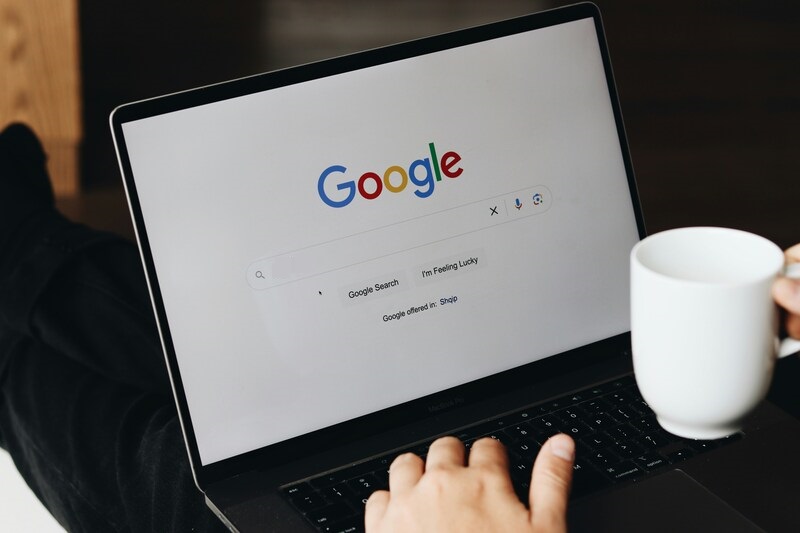
A well-optimized Google Business listing is crucial for local SEO:
- Claim Your Google Business Listing: Claim your business on Google My Business if you have not already done so. Verify your business in order to obtain control over the listing.
- Complete Your Profile: Ensure that all information is precise and comprehensive, including the business name, address, phone number (NAP), website URL, business hours, and categories. Add a detailed description of your services while naturally including relevant keywords.
- Add Photos and Videos: Post professional photos of your spa’s outside, interior, treatment rooms, and employees. Include videos that demonstrate your services or offer virtual tours.
Manage Online Reviews and Ratings
Online reviews are critical for local SEO and can significantly influence potential clients’ decisions. The following is a method for effectively managing them:
- Encourage Reviews: Ask satisfied clients to leave reviews mainly on Google Maps, but also on other platforms like TripAdvisor or Yelp. Offer clear instructions or direct links to review pages.
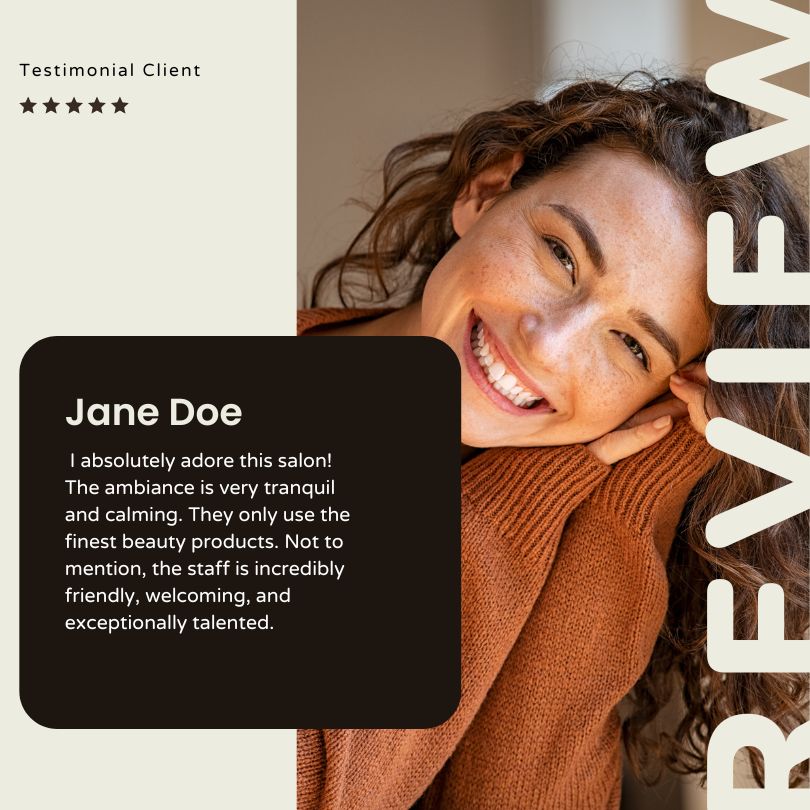
- Respond to Reviews: Respond to reviews at all times, whether they’re good or bad. Thank clients and address any issues mentioned while maintaining a professional tone.
- Monitor Your Reputation: Keep an eye on review sites and social media platforms for any new reviews. Use reputation management tools if needed.
Establishing Local Citations
Local SEO is contingent upon the presence of local citations (the mention of your business name, address, and phone number) in online directories and websites.
Here are a few principles on how to build local citations for your spa business:
- List Your Spa in Relevant Directories: Begin by submitting your business to prominent directories, including Yelp, TripAdvisor, and local business directories. Then, consider the location of your facility and niche directories that are specific to the spa and wellness industry.
- Consistency is Key: Guarantee that your NAP (Name, Address, Phone Number) information is consistent in all online listings and directories.
- Build Local Links: Partner with bloggers, local businesses, and tourism websites to secure backlinks to your website. These links can improve your site’s authority and local search rankings.
Creating Location-Specific Landing Pages
With location-specific landing pages, you can effectively target clients who are in quest of services in specific regions. Here’s how to create effective location pages:
- Dedicated Pages for Each Location: If you have multiple spa locations, create separate landing pages for each one. Guarantee that the address, phone number, and specific services provided by the location are included on each page.
- Localized Content: Write unique content for each location page, highlighting the specific services and promotions available at that branch. Incorporate local keywords (i.e.., “best spa in [city]”) to a natural extent in the content.
- Customer Testimonials: Include consumer testimonials that are specific to a particular location in order to establish credibility and trust.
Maps and Directions
Embed a Google Map on each location page to help clients find your spa easily. Provide detailed directions and parking information.

Focusing on local SEO can enhance your spa’s visibility to potential clients in your vicinity, increase foot traffic, and boost your appointments. In the subsequent chapter, we will discuss SEO strategies to further improve the online visibility of your retreat.
4. Technical SEO for Spa Businesses
“Technical SEO” is the term used to describe the process of optimizing the infrastructure of a website to facilitate the easy crawling, indexing, and rendering of the site by search engines.
If on-page SEO is focused on content and keywords, technical SEO involves the configurations and backend settings that impact your site’s overall performance.
Importance of Technical SEO
There are five key benefits of technical SEO:
Enhanced Search Engine Crawling and Indexing
- Crawling: Bots (crawlers) are employed by search engines to scan web pages. By implementing appropriate technical SEO, these algorithms can effortlessly navigate your website, identifying and indexing all relevant pages without issues.
- Indexing: Your web pages must be indexed by search engines in order to be included in search results. Technical SEO is essential for guaranteeing that all critical pages are accurately indexed.
Improved Website Performance:
- Speed: A website that loads quickly is more user-friendly and is more likely to be favored by search engines, resulting in higher rankings.
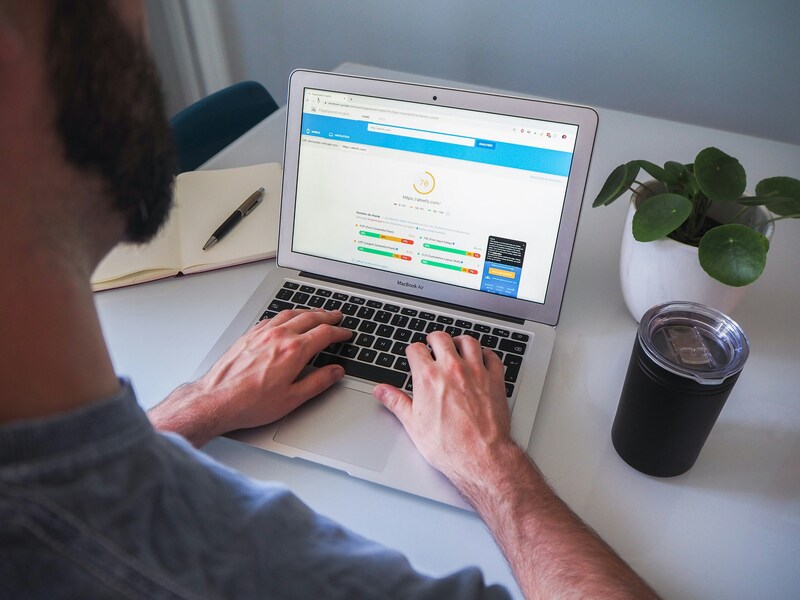
- Mobile-Friendliness: A mobile-friendly website is critical, with more and more consumers accessing the internet exclusively via mobile devices. In its rankings, Google places a high value on websites that are optimized for mobile devices.
- Enhanced Security: Google prioritizes secure websites that employ SSL certificates (HTTPS.) Using HTTPS means that all data is end-to-end encrypted to mitigate data breach or leak.
Better User Experience:
A well-optimized site with good structure and clear navigation can ensure:
- Ease of use. Users can easily find what they are looking for on the site
- Optimal usability, regardless of the device
- Enhanced user experience, lower bounce rates, and increased engagement
Higher search engine rankings:
Websites that are technically sound tend to rank better in search engines. When it comes to search engine optimization, factors like secure connections, quick page loads, and optimization for mobile devices are crucial.
Key Elements of Technical SEO
- Website Speed: People anticipate that web pages will load quickly. When the website is slow to load, it can lead to higher bounce rates, which will also negatively affect the site’s search ranking. Some effective ways to make a website faster are to use a Content Delivery Network (CDN), compress image files, and minify code.
- Mobile-Friendliness: Ensure your site adopts responsive design, so it stays optimal on different devices and screen sizes. It is important to know that Google prioritizes the mobile version of your website for the purposes of indexing and ranking.
- Encrypted Connections (HTTPS): An SSL certificate encrypts data between your site and its users, increasing trust and security. Sites that employ HTTPS are given preference in search results by Google.
- Structured Data: Structured data (Schema) markups help Google understand the content of your pages better, and it can improve click-through rates by providing additional information in search results. Structured data markups also make your site eligible for rich search results (like featured snippets.)

- XML Sitemaps: An XML sitemap helps search engines discover and index all the important pages on your site. Ensure that search engines are informed of new or updated content by maintaining an updated sitemap.
- Robots.txt File: The robots.txt file tells search engines which pages to crawl and which to ignore. By appropriately configuring your robots.txt file, you ensure that search engines focus on the most critical components of your website.
In order to establish a robust online presence for your retreat, it is essential to establish technical SEO. Technical SEO not only enhances your search engine rankings but also guarantees a secure and seamless user experience.
24/7 Online Booking and Its Impact on SEO
In the current fast-paced world, any facility must have a functional 24/7 online booking system. It not only enhances the customer experience by enabling clients to schedule appointments at their convenience, but it also has a positive impact on your search engine optimization.
- Improved User Experience: A frictionless online booking system can help reduce bounce rates and increase conversion rates. Search engines rank sites that offer good user experiences higher.
- Increased Engagement: An intuitive booking system can encourage users to remain on your website for longer as they explore various services and schedule appointments. This increased engagement indicates to search engines that your site is valuable to users, which potentially boosts its rankings.
- Mobile-Friendly Booking: A responsive, mobile-friendly booking system like Bookeo ensures a smooth experience, which is crucial for maintaining your site’s mobile SEO performance.
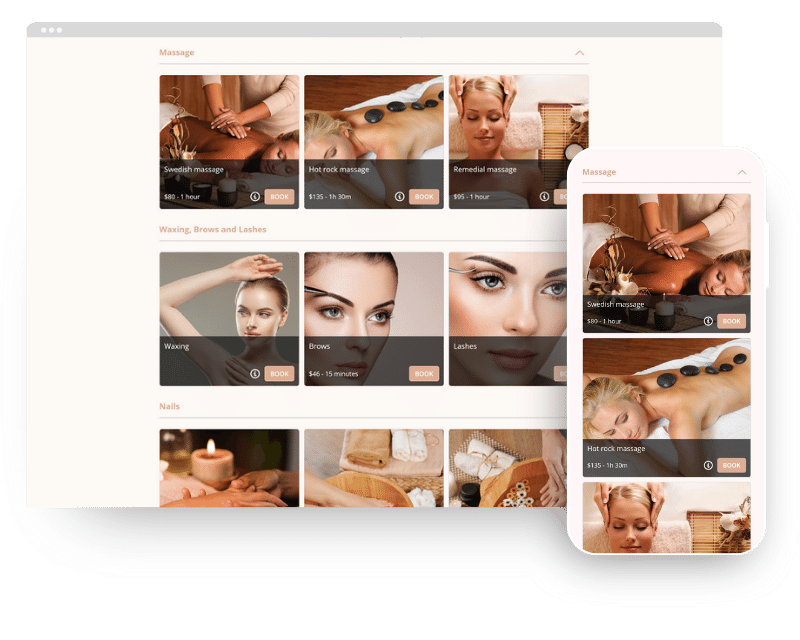
- Integrated Marketing Tools: A comprehensive booking system like Bookeo can help manage appointments, track client preferences, and automate marketing efforts. By eliminating administrative obligations, you can concentrate on optimizing your SEO strategies.
- Data Collection and Analytics: Online appointment scheduling software for spas can provide valuable insights into customer behavior and preferences. Use this data to refine your marketing strategies and further improve your site’s SEO.
By emphasizing technical SEO, you establish a robust foundation for your spa’s online presence.
How to Address Common Technical SEO Issues
The following are some effective methods that can be employed to resolve common technical SEO issues:
1. Website Speed
- Optimize Images: Resize and compress images to optimize their quality while simultaneously decreasing the launch time.
- Enable Browser Caching: Caching refers to locally storing frequently accessed resources, so the user’s browser doesn’t need to download them every time a user visits your site.
- Minify CSS, JavaScript, and HTML: Removing unnecessary characters from code can decrease the size of files and enhance the speed of loading.
Use a Content Delivery Network (CDN): By distributing your content across multiple servers, you can reduce latency and enhance the loading times for users worldwide.
2. Mobile-Friendliness
- Responsive Design: Implement a responsive design that adjusts to different screen sizes and resolutions.
- Mobile-Friendly Testing: Use Google’s Mobile-Friendly Test tool to check if your site meets mobile usability standards and address any issues identified.
- Optimize for Touch: Ensure buttons and links are easy to tap on mobile devices, avoiding elements that are too close together.
3. Secure Connections (HTTPS)
- Install an SSL Certificate: Enable HTTPS on your server by purchasing and installing an SSL certificate.
- Redirect HTTP to HTTPS: Establish 301 redirects from HTTP to HTTPS. This ensures that all traffic is secured and that no extant SEO value is lost.
- Update Internal Links: Ensure that all resources and URLs on your website are secure by updating internal links to use HTTPS.
4. Other Common Technical SEO Issues
- Broken Links: When you notice a broken link on your website, fix it immediately. This is essential for the purpose of enhancing the user experience and preventing search engines from reaching dead ends.
- Duplicate Content: Use the canonical tag (rel=”canonical”) to establish the preferred version of a page.
- XML Sitemap: Create and submit an XML sitemap to search engines to help them discover and index your pages more efficiently.
- Robots.txt File: Your robots.txt file should be properly configured to permit search engines to crawl your website while simultaneously restricting access to sensitive or irrelevant pages.
5. Off-Page SEO for Spa
Off-page SEO encompasses all actions that are undertaken outside of your website in order to enhance its search engine rankings. While on-page SEO concentrates on optimizing the elements of your website, off-page SEO focuses on leveraging external factors to enhance the site’s authority.
In short, off-page SEO is crucial for establishing your site’s credibility in front of both your users and the search engine algorithms.
Below, we will go over the essential components of off-page SEO.
1. Building High-Quality Backlinks
Backlinks, or inbound links, are links from other websites to your spa’s website. High-quality backlinks are one of the most important factors in off-page SEO, as they signal to search engines that your site is trustworthy and valuable.
A website’s decision to link to your page is an endorsement of the page’s reliability and the quality of its content—the online equivalent of a vote of confidence.
Aim to get backlinks from reputable and relevant websites in the wellness, beauty, and health industries. Here are what you can do:
- Create Link-Worthy Content: Publish informative blog posts, guides, and infographics that are of high quality and that others find valuable and want to link to.
- Reach Out to Industry Influencers: Build relationships with bloggers and influencers in the spa and wellness sector. This has the potential to generate a backlink to your website and promote your content.
- Utilize Local Listings and Directories: Gain valuable backlinks by submitting your spa to industry-specific listings and local business directories.
2. Guest Blogging and Outreach Strategies
Guest blogging is the process of composing and publishing articles on other websites in order to expand one’s audience and acquire backlinks in the process.  In order to get guest blogging opportunities, you can follow these steps:
In order to get guest blogging opportunities, you can follow these steps:
- Identify Relevant Blogs: Find blogs and websites related to spa, wellness, and beauty where you can contribute guest posts.
- Pitch Engaging Topics: Pitch topics that are both valuable and distinctive, and that would be well-received by the audiences of the host site.
- Write High-Quality Content: Produce guest posts that are informative, well-written, and of value to the readers.
- Include a Link Back to Your Site: Include a link back to your website in your author bio or within the content.
6. Social Media Marketing’s Effect on Search Engine Optimization
Indirectly, social media marketing can influence your SEO endeavors by increasing brand awareness and driving traffic to your website.
Here’s what you can do:
- Build a Strong Social Media Presence: Create profiles on major social media platforms like Facebook, Instagram, Twitter, and LinkedIn.

- Share Engaging Content: Post content that is relevant to your audience on a consistent basis, including promotions, client testimonials, and behind-the-scenes glimpses.
- Engage with Your Audience: Respond to comments, messages, and feedback in a timely manner to build a loyal community.
- Promote Your Blog Posts and Articles: Share your spa’s blog posts and articles on social media to drive traffic to your website.
7. Measuring and Analyzing Your Spa SEO Efforts
Tracking and measuring your SEO performance is crucial for understanding the effectiveness of your strategies.
In order to accomplish this, it is possible to employ both free tools, such as Google Analytics and Google Search Console, and premium tools, such as Ahrefs and SEMrush.
Key Metrics to Monitor
- Organic Traffic: The number of visitors coming to your site from search engines. Indicates the effectiveness of your keyword optimization and content strategy.
- Bounce Rate: The proportion of visitors who abandon your website after they have viewed only one page. A high exit rate may suggest that the content is not relevant or engaging to the visitors.
- Keyword Rankings: Monitors the positions of your target keywords in search engine results pages (SERPs). Helps evaluate the effectiveness of your keyword optimization endeavors.
- Conversion Rate: Calculates the proportion of visitors who complete a desired action, such as scheduling an appointment. Demonstrates the efficacy of your website in converting visitors into clients.
- Backlink Profile: The quantity and quality of backlinks pointing to your site. Reflects your site’s authority and reputation.
Optimizing and Refining Your SEO Strategy Based on Data
- Analyze Trends and Patterns: Search for patterns in your data to determine which strategies are effective and which are not. Adjust your strategy based on these insights.
- Address Weaknesses: Identify areas where your SEO performance is lacking and take corrective actions. For example, if your bounce rate is high, improve your content or site navigation.
- Optimize High-Performing Areas: Emphasize the factors that are contributing to the greatest degree of success and magnify them. For example, if a particular blog post is attracting a lot of traffic, you should create a similar post.
- Continuous Improvement: SEO is a continuous process that necessitates consistent monitoring and improvements. To ensure that your strategy remains effective, it is crucial to remain informed about the most recent SEO trends and algorithm updates.
Conclusion
This article has examined the fundamental aspects of spa SEO, including technical and off-page strategies, keyword research, and on-page optimization. We’ve also highlighted the importance of creating engaging content and leveraging local SEO to dominate your area.
Investment in search engine optimization (SEO) is for the long haul; it calls for constant monitoring and tweaking. The strategies that have been discussed will enhance the online presence of your spa, attract additional clients, and expand your business.
Finally, consider using Bookeo to manage your appointments efficiently, enhancing customer satisfaction and supporting your overall SEO efforts.



